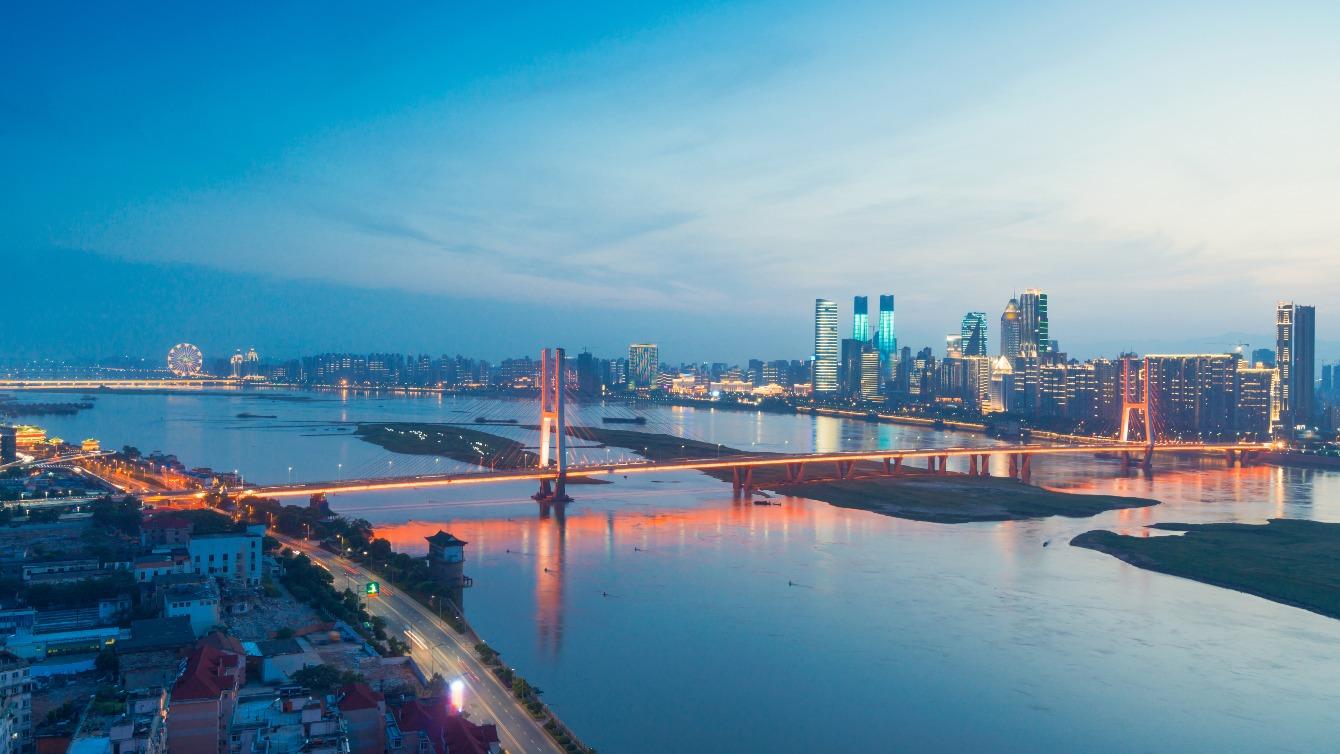
China has a population of 1.4 billion people, and it is estimated that by 2030, 75% of them will live in cities. With the urban population reaching 1 billion, the Chinese government is integrating some of the most vibrant metropolitan areas into regional economic clusters (RECs).
RECs encompass more than 500 million people and represent some of the most economically powerful areas in China.
They include the Beijing-Tianjin-Hebei (JingJinJi, JJJ), Sichuan-Chongqing (SCQ) and Yangtze River Delta (YRD) clusters, as well as the Greater Bay Area (GBA). RECs are part of a national strategy to transition into sustainable, high-quality growth and can be compared to other international city clusters, such as those in western Europe from Paris to Cologne, or in the northeast US from Washington DC to Boston.
An economic powerhouse
Of the four Chinese RECs, the YRD takes the lead. Despite comprising only about 4% of China’s land area, it accounts for about one-quarter of the country’s GDP, the largest share among all RECs. Additionally, the YRD has more than 240 million inhabitants, about half of the entire European Union with its population of 446 million.
The population of the YRD is also highly educated, with 20% of Chinese tertiary education students coming from this area. Thus, high-end manufacturing sectors, such as biotechnology, semiconductors and electric vehicles, thrive in this cluster.
R&D investments are also highest in the YRD, reaching one-third of the national total. Many renowned tech companies like Tencent, BYD, Huawei and Alibaba have a significant presence in the YRD. With their suppliers, service providers, and other partners, they form a highly integrated supply chain network in the region, capable of producing technologically advanced and price-competitive products.
Goods and services are transported using the YRD’s first-rate infrastructure, including the ports in Shanghai and Ningbo-Zhoushan (the world’s first and third largest, respectively), which handle over 7 billion tons of cargo annually.
The region’s unique strategic position allows it to connect horizontally into central China through the Yangtze River and vertically to China’s wealthy coastal regions via the ocean and vast canal networks. Domestically, over 24 airports, 9,500 kilometers of railway, and 16,000 kilometers of highway facilitate the movement of goods and passengers across the region. Over 40% of Chinese exports now pass through the YRD.
Further, the cluster also leads in foreign direct investment into China. With its almost 30% share in realized FDI, the YRD is a strategic area within China and globally. This is evident from German FDI into China, as about two-thirds of German companies are located in the YRD.
Policies for more integrated, cross-provincial development
The YRD is also trying to boost its integrated development with more supportive policies. Many initiatives aim to simplify cross-provincial bureaucracy and the distribution of resources, for example, allowing residents to access medical services from anywhere within the YRD. The region also aims to share educational and cultural resources, fostering a more integrated intellectual environment. The goal is to make the YRD an attractive destination for businesses, as navigating provincial borders becomes less troublesome, allowing them to benefit from a highly integrated region.
Outlook: Leading China’s economy and a gateway to the world
The YRD’s objective is to become a world-class urban agglomeration by advancing high-tech industries such as AI, biotechnology and electric vehicles. It is expected that infrastructure projects will continue to enhance connectivity. Additionally, green development will continue to be a priority, with increased investment planned in sustainable practices and environmental protection measures.
By 2035, the YRD aims to solidify its position as a leader in innovation, high-tech manufacturing and sustainable development. This REC will undoubtedly play an important role as a leading center in China’s economy and continue to be the country’s gateway to the world.
Top 100 Chinese Universities by Region

Jan Jovy
As part of the PwC China Inbound/Outbound and European Business Group, Jan Jovy supports companies in expanding their cross-border activities, transformation and footprint globally. He served as General Manager at the German Chamber of Commerce Network in Greater China for over seven years. He has been deeply involved in all aspects of business, economic and regulatory exchange platforms between China and Germany, especially key business associations, and in government conversations at national and regional levels.
Tel: +86 2323 7795
E-Mail
Matthew Yang (co-author)
Matthew Yang supported the PwC China Inbound/Outbound team by contributing to research and analysis on the economic development of the YRD in a global context. He has a strong foundation in economics, urban planning and data analysis and aims to further drive sustainable urbanization and high-tech industry growth.
Interested in knowing more?
Make sure you get the latest information and subscribe. As a subscriber to the digital edition, you will receive an information update three times a year.
PwC China Compass
You will discover how to take advantage of current opportunities and safely circumnavigate the risks of doing business in China.
Contact us

Partner, PwC China Business Group Leader & Chairman PwC European China Business Group, PwC China
Tel: +86 10 6533-8882











